The very last thing I did in 2019 was break my foot. This was not my wisest move, and has lead to a lot of problems and frustrations as my ability to be creative with toy photography suffered as a result. I don’t recommend it.
It was not a complete loss, creatively speaking, as I will discuss in a bit, but first thing’s first: What the heck happened?
I covered my injury in detail on my personal blog, but here’s the short version: Through a series of unfortunate events, I slipped on some stairs and broke the bones in three toes (no drinking involved). A week later, I had surgery to pin one of the toe bones.
As you can imagine, I have been highly immobile for several weeks, and for two of them I was basically tied to either the couch in my living room or my bed. The problem, from a toy photography perspective, is that all of this is on the first floor of my house. My toys and my studio are in the basement. Between the two is a nice long set of stairs that neither my doctor nor my loving wife would allow me to descend.
Adding to the annoyance, I was in the midst of shooting 10 images for the current round of the Photography Scavenger Hunt and had been away from my studio for 10 days over the Christmas break, so I was itching to make progress.
Generating ideas
My creative process is a constant cycle of generating ideas, then executing those ideas by turning them into images. I was unable to execute on the ideas, but I could still generate new ones.
I did this in two ways. First, I spent a lot of time flipping thru images in my ideas folder. I’ve written about this in the past (see The Foundation Series: Ideas Folder), but basically, I collect images from various sources that inspire me at the time. I then review these images later when I need inspiration.
After the injury, I reviewed my ideas folder a lot.
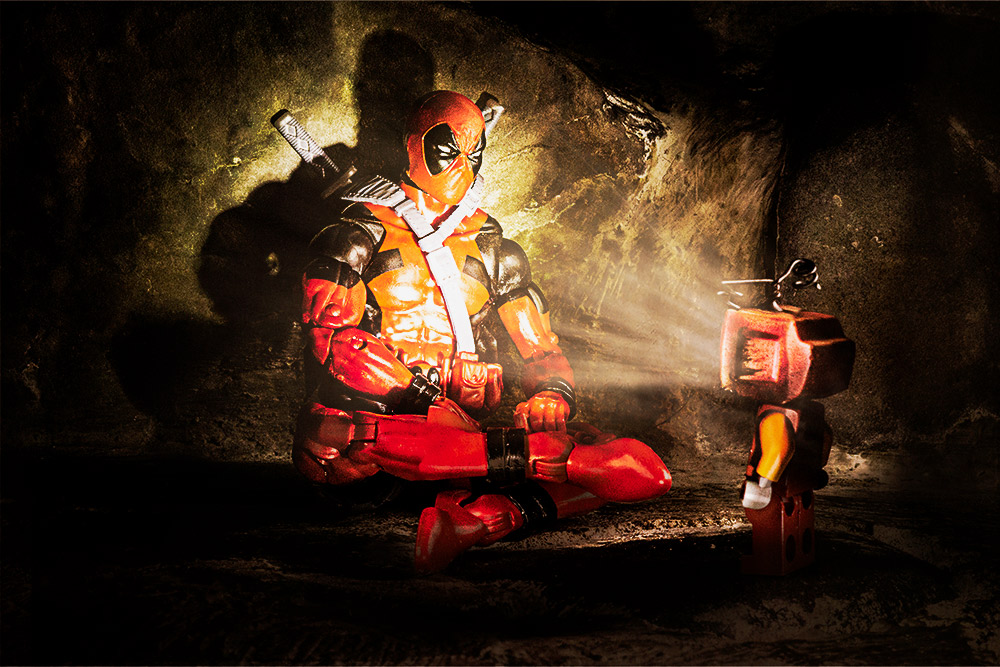
The second way I generate ideas is by watching a lot of TV and reading a lot of books. I’ve said this before, but Hollywood is an amazing place to get inspired, both for concepts and for style. These directors and other talents are masters of visual storytelling, and we can learn a lot from them. I ended up watching a lot of Star Wars, Marvel movies and binged the entirety of The Expanse, filling my brain with visual imagery that it can use as fodder to generate future photos.
Pre-visualization: sharpening the concepts
As I mentioned above, I was in the middle of creating shots for the Photography Scavenger Hunt. I already had some ideas for those shots. Unfortunately, I was limited in my ability to actually shoot the shots, so I ended up just thinking about them.
I tend to create as I play. I get an idea, grab some figures and other elements (accessories, background elements, lights) and play with them in my studio. All the while refining the idea into a solid composition. When I get it perfected, I reach for the camera and capture it.
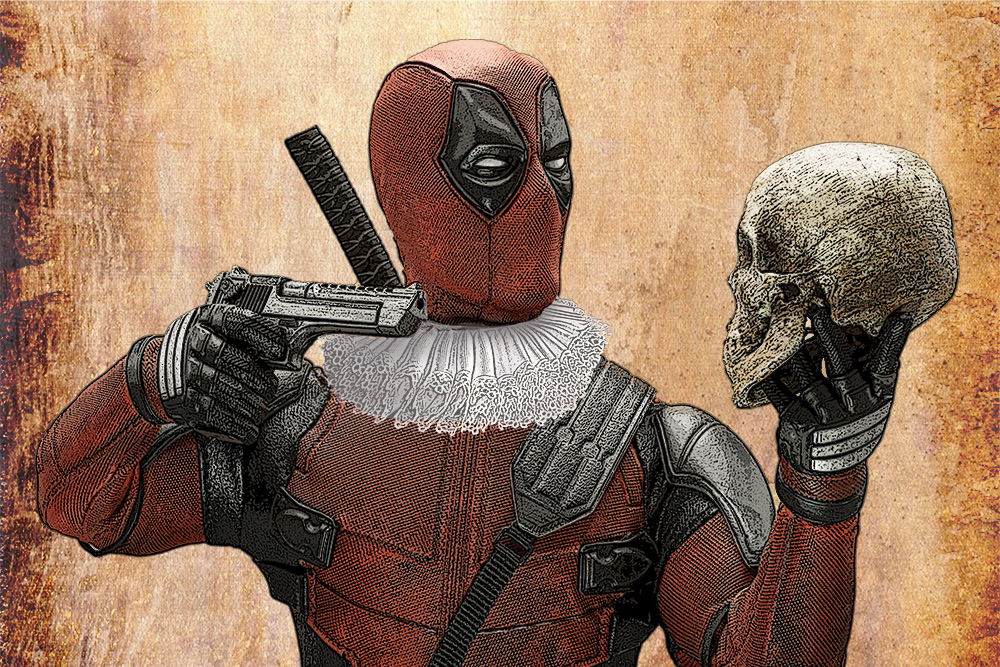
This process sometimes takes 30 minutes, sometimes it can take hours. Since I couldn’t do it in-studio, I spent a bunch of time thinking through problems. These shots cannot be revealed yet as they are embargoed for the hunt, so I can’t show them. However, one required a toy to be composited into a background.
I already had the background shot ready to go, so I stared at the background and just thought about the process I would go through to get the shot: What lens would I use and how would I angle it to get the image I envisioned? How would I light the main subject to match the background? What parts of the background would be masked out, and which ones would end up showing in front of the main subject?
I thought through everything.
Previz came in handy
Besides keeping me entertained, pre-visualization ended up being incredibly valuable. As my foot slowly healed I was able to be a little more mobile. After about a week I could hobble downstairs for small periods of time. I knew I only had 20–30 minutes before my foot would ache too much to continue.
So I went downstairs to my studio with plans to shoot the elements needed for one composite shot I had previz-ed all the way through. I knew I could do the post work upstairs. To make that work I needed to get the shots in-camera. And because I already planned everything out, I was able to set up and capture what I needed on camera in only 15 minutes. My first shot was the keeper, though I did take some safety shots as well.
Job done, I hobbled back upstairs, put my foot up and finished the shot on my laptop. The best part? I wasn’t gone long enough for my wife to notice. Win.
Shopping for more toys
This part isn’t so awesome, as my wallet is much lighter than it was before I broke my foot. I spent a bunch of time shopping for new figures. I tend to buy figures based on my photography ideas. This time I bought some figures that just seemed interesting to me.
It turns out I had a theme going. I picked two female figures from the latest Star Wars trilogy—Maz Kanata, and Rey from The Last Jedi. I also picked up three droids: IG-88, L3-37 and an old-school B1 battle droid, all Black Series.
I’m all ready for when the muse hits me next.
In conclusion
I am not going to lie, breaking three toes and being immobile for several weeks really sucks. Thankfully things are healing on schedule and I am a lot more mobile now. I am wearing an orthopedic support boot, but I can get to my studio at will.
However, despite the massive inconvenience and limitation, I think the experience will be a net positive. I was able to sharpen some of the softer skills, like ideation and pre-visualization, that will serve me well in the future.
Maybe Bob Ross was right. There are no mistakes…just happy accidents. (Though he could have warned me that some happy accidents hurt!)
[dave]
Want more toy photography goodness? Subscribe to our weekly email round up so that you never miss a post. You can also listen to episodes of the podcast!



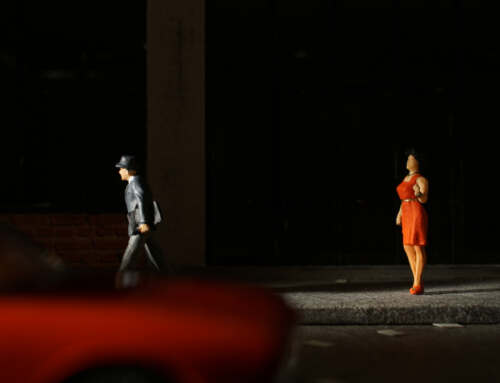
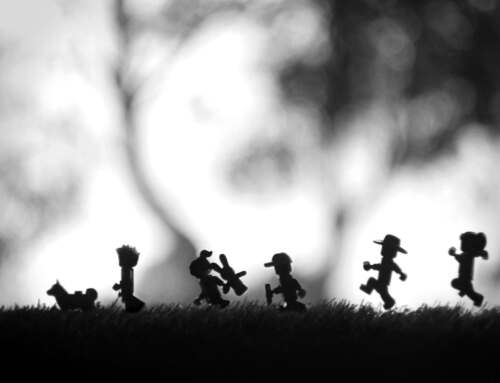
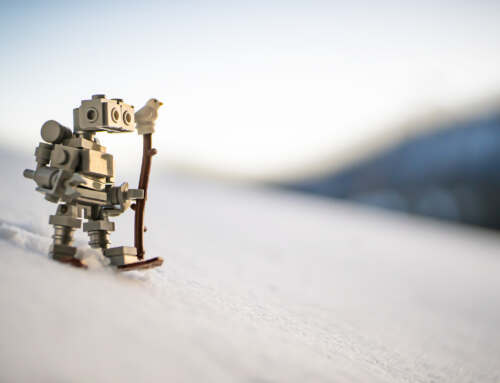
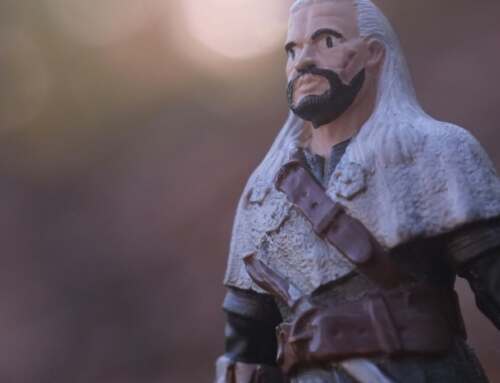
I’m very sorry to hear that you got hurt but it sounds like you are making the best of it. I know it’s frustrating when our photography time is interrupted. I hurt my shoulder and hip a couple months ago and it’s making me rethink how I take photos. My standard lighting setup has me holding the flash so I can get just the right angle but my shoulder doesn’t want to do that for very long, so I either have to be very efficient with my photo time or come up with a different lighting setup completely.
I like your “Ideas Folder” concept. That’s brilliant… so I just started one too 🙂
I hope you heal quickly!
Lynn
Thanks Lynn.
You can get small flash stands for not too much money. Most flash units will also fit onto a GorillaPod or a Platypod for the really compact support options. I’d look into one of those.
Thank you so much Dave! I’ve tried a few different options but none seem to give the same effect as when I hold the flash. I’ve had some luck with Rogue Flashbenders, so at least I have that option for my most sore days.
I hope you are feeling better each day!
Lynn
I’m glad you’re on the mend and I did a lot of pre-visualization on this round as well. Hopefully, it will show. I did get into photoshop more than normal too, so that’s a plus.
I’m also very much wanting a Deadpool action figure (like yours) for my own, but doubt I can afford him.
Take care,
Wade
Thanks Wade
Those Hot Toys figures are certainly pricey, but the attention to detail is top notch. If you want to shoot with him, come on over 🙂
Great read, Dave. I’m glad you are the mend and I look forward to seeing what your creative mind shares with us.
Thanks Christina!
My goodness Dave! So sorry your holiday was interrupted so dramatically and glad you are healing. Yikes. Hang in there — and thanks for keeping the fun posts coming even in the midst of it all. Cool pics, too. I love the one with the Krash TV being.
Thanks Doug!